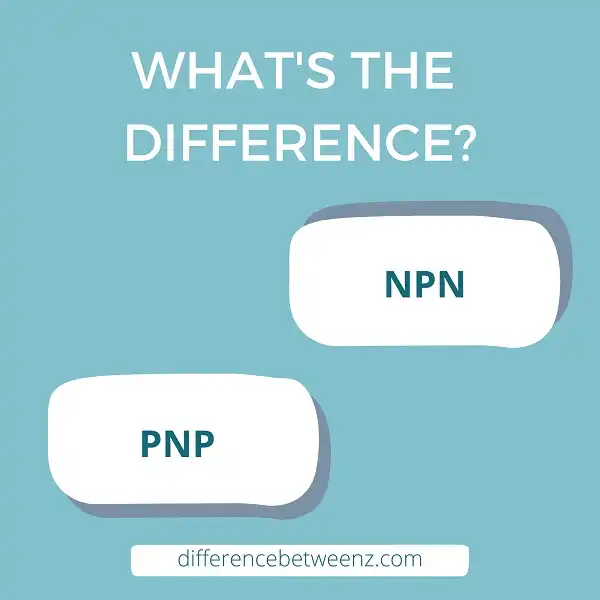There are two main types of transistors- NPN and PNP. Each type has its own unique characteristics that make it better suited for certain applications. In this blog post, we will discuss the differences between NPN and PNP transistors, and when each type is most appropriate. Stay tuned!
What is NPN?
NPN is an acronym for negative-positive-negative. An NPN transistor is made up of three sections: the emitter, the base, and the collector. The emitter is the negative terminal, the base is the positive terminal, and the collector is the negative terminal. NPN transistors are used in electronic circuits to amplify or switch electronic signals. NPN transistors can be found in a variety of electronic devices, such as radios, televisions, and computers. NPN transistors are also used in some types of sensors.
What is PNP?
PNP stands for positive-negative-positive and is a type of transistor. PNP transistors are made of two types of semiconductor materials, P-type and N-type, which are placed in a way that creates an electrical field. The PNP transistor has three terminals: the emitter, the base, and the collector. The PNP transistor works by using an electric current to flow through the base in order to control the current flowing between the emitter and the collector. PNP transistors can be used as switches or amplifiers and are found in a variety of electronic devices.
Difference between NPN and PNP
NPN and PNP are two types of transistor configurations. NPN transistors are made of two N-type semiconductor materials sandwiching a P-type material in the middle. PNP transistors are made of two P-type semiconductor materials sandwiching an N-type material in the middle. The main difference between NPN and PNP is that NPN transistors allow electrons to flow from the emitter to the collector while PNP transistors allow holes to flow from the emitter to the collector. NPN transistor is turned ON when a small current flows through the base, whereas a PNP transistor is turned ON when a small current flows through the base in the opposite direction. When the NPN transistor is turned ON, it allows electrons to flow from the emitter to the collector, and this forms a closed circuit between the emitter and collector terminals. However, when the PNP transistor is turned ON, it allows holes to flow from the emitter to the collector, and this forms an open circuit between the emitter and collector terminals. Thus, we can conclude that NPN transistors are used for amplifying or switching electronic signals while PNP transistors are used for generating negative voltage in electronic circuits.
Conclusion
In order to choose the best transistor for your needs, it is important to understand the difference between NPN and PNP transistors. NPN transistors are better for circuits that need a lot of currents, whereas PNP transistors are better for circuits with low voltages. By understanding this basic information about transistors, you can make sure you are choosing the right component for your project.


